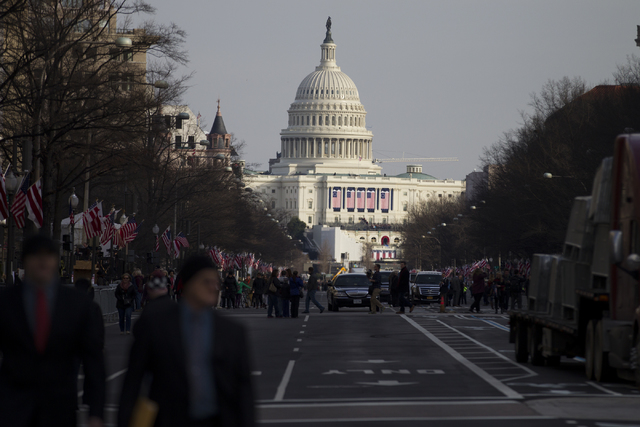Jim Hartman on the tax bill: making things a little better
President Donald Trump’s signing of the Tax Cuts and Jobs Act of 2017 was met with the overheated, partisan rhetoric of our current politics.
At a White House rally on Dec. 22 celebrating its passage, over-the-top praise was heaped on Trump by congressional Republicans.
He was lauded for “exquisite presidential leadership,” as a “man of action,” and “the president of the United States, whom I love and appreciate so much.”
Utah Senator Orrin Hatch may have set a record for fawning by declaring that Mr. Trump may be the greatest president ever. Ever? Not Washington— or Lincoln?
Not to be outdone rhetorically, Democrats launched their own fusillade of criticism directed at Trump and the tax bill. Senate Democratic leader Chuck Schumer employed the standard line used against all Republican tax cuts—that they benefit only the rich.
“There are only two places where America is popping champagne,” said Sen. Schumer, “the White House and corporate boardrooms.”
Democratic House Leader Nancy Pelosi denounced “the greed of those with power, the cruelty that is in the heart of the tax scam.”
And, California Governor Jerry Brown labeled the bill a “monstrosity” likening Republicans to “mafia thugs.”
The tax bill is not popular in the polls. A recent Wall Street Journal/NBC survey found 41 percent opposing it with only 24 percent in support. The reason: the poll reflects few people believe it will provide tax relief for middle-class families.
While it’s the most significant tax measure since the Tax Reform Act of 1986, the bipartisanship of more than 31 years ago seems unattainable today.
The 1986 tax reform was driven as much by Democrats as by President Ronald Reagan. Dick Gephardt and Dan Rostenkowski moved the bill in the House, and Bill Bradley was a leading architect in the Senate.
The bill cut the top income tax rate from 50 percent to 28 percent, consolidated 14 tax brackets down to two, removed 6 million poor Americans from the income tax rolls, eliminated tax loopholes and shifted tax burdens to corporations— while being revenue neutral.
Real test
The real test for the 2017 tax bill—setting aside the rhetoric on both sides—will it make things a little better or worse?
Since 2005, Democrats and Republicans have acknowledged the 35 percent corporate tax rate as uncompetitive. The United States has the highest top statutory corporate tax rate among the Group of 20(G20) nations, according to the Congressional Budget Office.
Beginning in 2012, President Barack Obama annually proposed a reduced 28 percent tax rate. His 2012 GOP rival, Mitt Romney, pushed for 25 percent. At times, a deal looked possible but partisanship always intervened.
As a direct result of the reduced corporate rate to 21 percent, six large corporations immediately announced plans to do more for their employees—bonuses, increases in their minimum wage, additional hiring, more business investment. The new rate offers hope of broader prosperity after a decade of slow growth and rising inequality.
The numbers
The individual tax reform essentially gives everyone a tax cut by retaining the existing seven tax brackets and trimming most of the rates by a few points.
In the end, the Tax Cuts and Jobs Act of 2017 will have tax brackets of 10 percent, 12 percent, 22 percent, 24 percent, 32 percent, 35 percent and a top rate of 37 percent.
Tax simplification is given a major boost with the near doubling of the standard deduction to $12,000 for singles and $24,000 for couples. The child tax credit has been doubled to $2,000 per child.
The nonpartisan Tax Foundation estimates the bill will result in an average $610 annual savings for middle-income Nevada families. A single Nevadan earning $45,000 taking the standard deduction will save $909.
A married household with two kids and combined earnings of $65,000 will save $1,825. The Tax Foundation further estimates economic gains achieved from the reduction in the corporate rate will result in the creation of an additional 3,048 Nevada jobs.
In 2018, the vast majority of Nevada workers will see a boost in their paychecks —that’s good news to celebrate.
Jim Hartman is an attorney residing in Genoa, Nevada.











